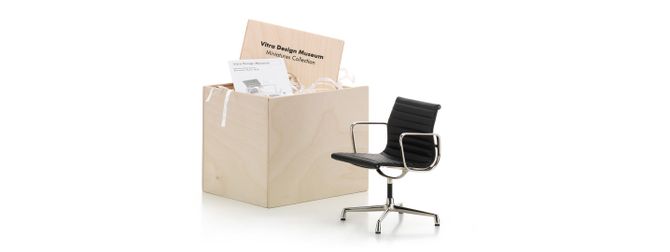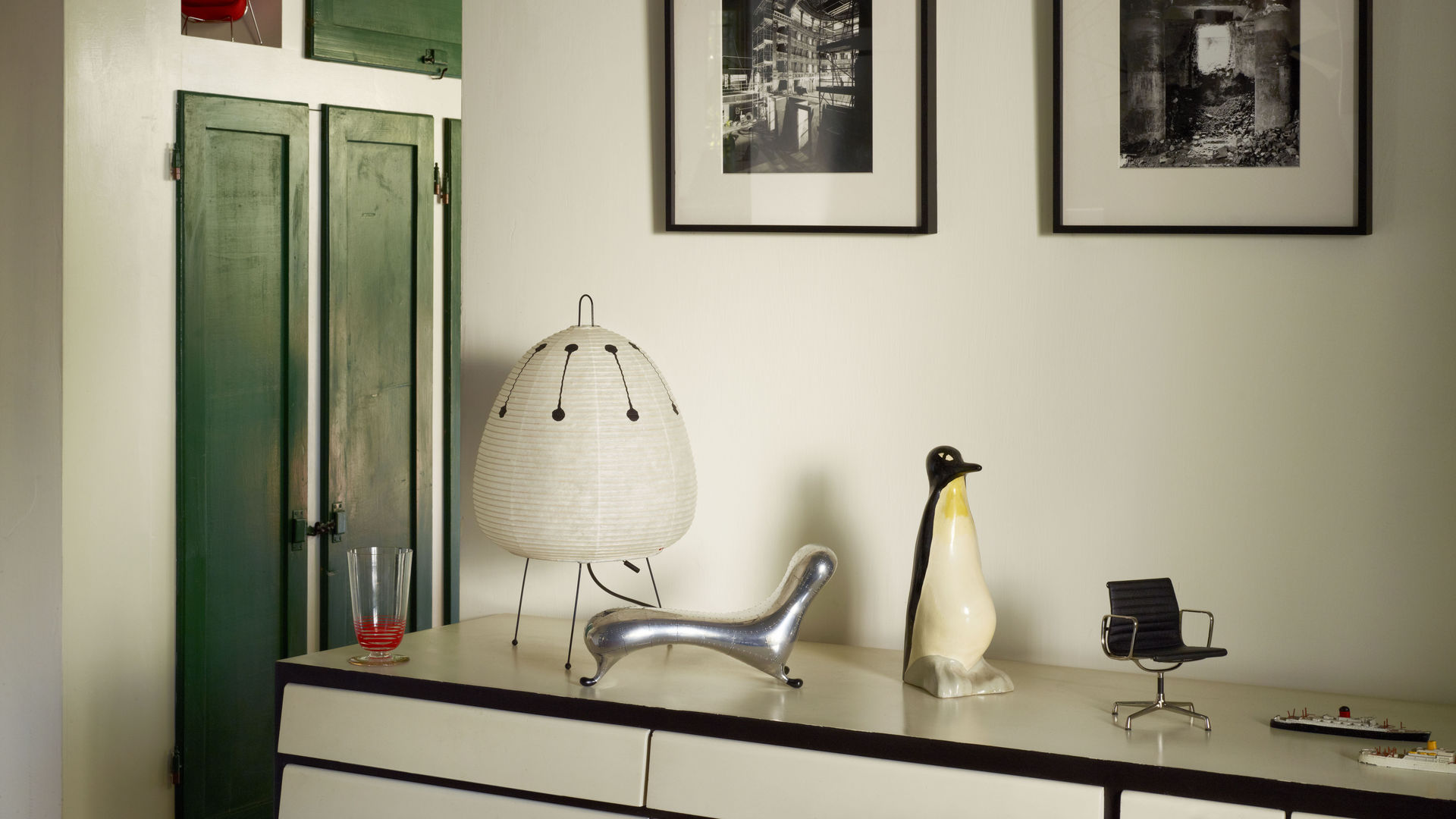
Miniatures Collection - Aluminium Chair
Charles & Ray Eames, 1958
Charles Eames became preoccupied with this problem until one day during a flight he came up with the idea of an aluminium frame construction combined with a material »seat«. He wanted to develop a shape following the natural lines of the body, not however as a hard shell, but as a resilient length of material stretched between two supports which trace the body's natural form. A narrow plastic strip extending the length of the material acts as reinforcement. The material is held in place by insertion into slits on the frame's outer edge.
Experiments with different covering materials later resulted in an upholstered sandwich construction consisting of two layers of »Nauga hide« with a thin filling of vinyl-foam and vinylwadding stitched at intervals of 1 7/8 inches using a high-frequency welding technique. Originally conceived for outside use, the first aluminium easy chairs to be mass produced, are today used solely in interiors.
Miniatures Collection
Da oltre due decenni il Vitra Design Museum realizza repliche in miniatura dei pezzi più importanti della propria collezione di mobili di design. La Miniatures Collection riassume l'intera storia del mobile industriale di design, spaziando da Storicismo e Art Nouveau a Bauhaus e Nuova Oggettività, da Radical Design e Postmodernismo fino ai giorni nostri. Misuranti esattamente un sesto rispetto alle dimensioni degli storici originali, le sedie sono tutte perfettamente in scala e ricreano con precisione i più minuscoli dettagli di costruzione, materiale e colore. Gli elevati standard di autenticità comprendono addirittura le venature naturali del legno, la riproduzione delle viti e la replica delle elaborate tecniche artigianali. Tutto questo ha reso le miniature apprezzati oggetti per collezionisti e ottimi strumenti didattici per università, scuole di design e studi di architetti.
